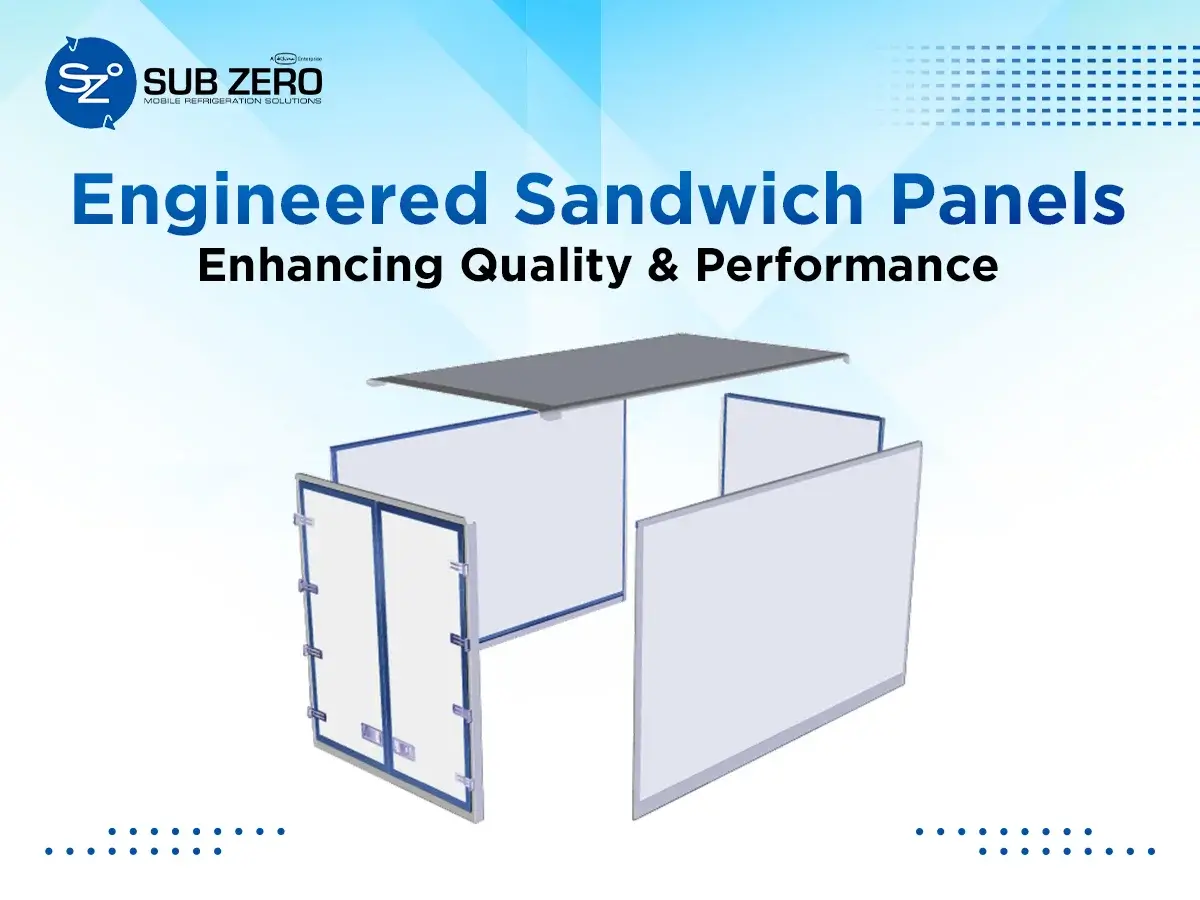
In modern product engineering, it is always a challenge to design a product which should be long-lasting, sturdy and at the same time have optimum weight, especially when it is a product asking for insulation from temperature variations, sound, moisture and atmospheric changes.
It is always a tradition in science and engineering which proves the statement ‘Every problem is an opportunity to improve or innovate’. To address the issues related to insulation and weight, the innovative solution of Sandwich panels came into existence and has been used for the last two decades.
What do sandwich panels mean?
These panels consist of three layers; two outer layers, on either side of a core material. The combination of these layers creates a structurally efficient and thermally insulated panel.
Here are the key components of sandwich panels
- Outer Skin: The outer layers of sandwich panels are typically made of rigid materials such as metal (usually steel or aluminium) or fiberglass. These skins provide strength and durability to the panel and protect the core material from external factors.
- Core Material: The core material is the central layer of the sandwich panel and serves various functions, depending on the intended application. Common core materials include:
- Foam Core: Polystyrene or polyurethane foam cores are used for insulation purposes. They provide excellent thermal insulation properties, making sandwich panels suitable for temperature-controlled environments.
- Honeycomb Core: Made from materials like aluminium, aramid, or thermoplastic, honeycomb cores offer high strength-to-weight ratios. They are often used in applications requiring structural integrity and lightweight construction.
- Mineral Wool Core: Mineral wool cores offer good fire resistance and acoustic insulation properties, making them suitable for applications requiring fire-rated and soundproof panels.
- Adhesive: To bond the core material to the outer skins, a strong adhesive is applied during the manufacturing process. The adhesive ensures that the layers remain firmly attached, providing structural stability to the panel. For PU injected panels the adhesion takes press when the PU changes form in a heated press.
These insulated sandwich panels are manufactured in a totally controlled automatic manufacturing process, which ensures the uniform quality.
PUF sandwich which typically refers to a construction or building material known as a “Polyurethane Foam (PUF) Sandwich Panel. It is a type of sandwich panel with a core made of polyurethane foam. When looking for a PUF panels, especially for applications like refrigerated trucks, PUF insulated containers or cold storage, there are several essential factors are considered to ensure expected output like…
- Thermal Insulation: In environments where temperature control is crucial, such as cold storage facilities or cleanrooms, sandwich panels with good thermal insulation properties help maintain stable temperatures. This not only preserves product quality but can also enhance worker safety by preventing extreme temperature fluctuations.
- Structural Integrity: Sandwich panels are known for their strength-to-weight ratio. When used in construction, they can contribute to the structural integrity of a building or structure, reducing the risk of collapse or damage during adverse changing weather conditions, transport on rough roads.
- Corrosion Resistance: In corrosive environments, such as chemical processing plants or coastal areas, sandwich panels with corrosion-resistant outer skins can protect structures and equipment from deterioration, indirectly enhancing safety by preventing accidents caused by structural weaknesses.
- Maintaining inside temperature: They ensure for Refrigerated trucks and containers maintain temperature inside the chamber. Ensuring that the cold chain remains intact is crucial for food safety and preserving the quality of pharmaceuticals and vaccines during transport.
- Vapour Barrier: Providing insulation alone to prevent the air seepage from outside is not enough for cold chamber application. The insulation chamber must also be impermeable to water vapour from the outside warm ambient atmosphere to the cold space. Failure to prevent this migration of water vapour results in condensation of water inside the chamber and forming of ice. This can obviously damage the perishable goods kept inside the chamber.
We have considered maximum possibilities of ‘something going wrong’ well in advance at the design stage. Thus, Sub Zero takes pride in offering world class refrigerated trucks that are made in India using in house manufactured sandwich panels.
